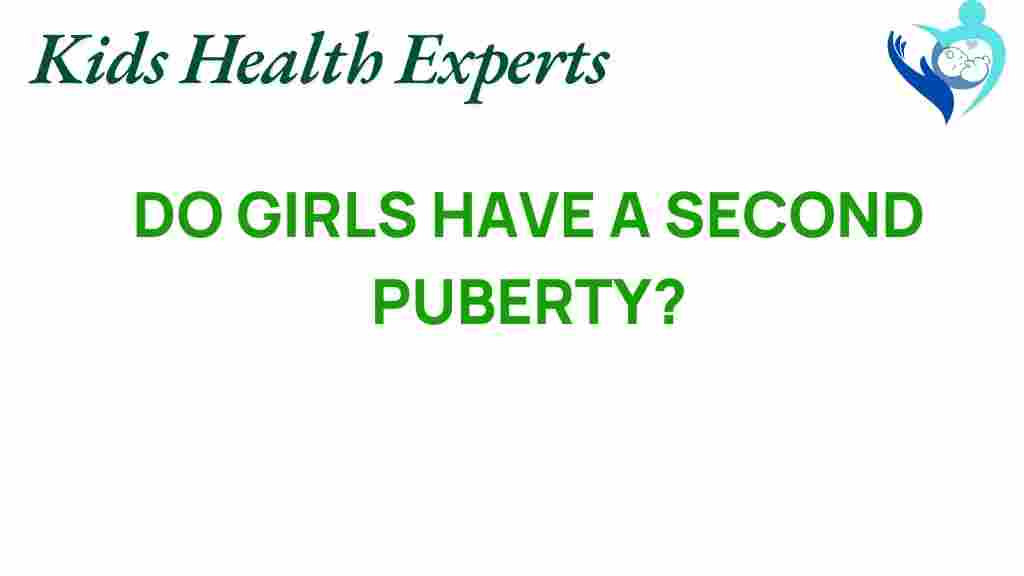Unraveling the Mystery: Do Girls Experience a Second Puberty?
When we think of puberty, we often picture the chaotic changes that occur during early adolescence. But what about the later stages of development? Many are curious about whether girls experience a “second puberty” as they transition into their late teens and early twenties. In this article, we will explore the concept of second puberty in the context of adolescent development, hormonal changes, growth spurts, emotional changes, body image, identity formation, and health awareness. Through understanding these aspects, we can better appreciate the complex journey that teenage girls undergo.
What is Second Puberty?
The term second puberty refers to the significant physical, emotional, and hormonal changes that some individuals experience during late adolescence and into early adulthood. While the first puberty is characterized by noticeable growth spurts and the onset of menstruation in girls, the second puberty may involve further maturation of body and mind.
Although the concept of second puberty is not universally accepted in the medical community, many young women report experiencing shifts in their bodies and emotions as they transition from teenage years into adulthood. These changes can be profound and can affect their body image, self-esteem, and identity formation.
The Stages of Adolescent Development
Understanding the stages of adolescent development is crucial to grasping the idea of second puberty. Here’s a breakdown of the key phases:
- Early Adolescence (Ages 10-14): This stage marks the onset of puberty, where physical changes such as breast development, menarche, and growth spurts occur.
- Middle Adolescence (Ages 15-17): During this time, girls often experience increased emotional fluctuations and identity exploration, alongside continued physical changes.
- Late Adolescence (Ages 18-22): This phase encompasses the transition into adulthood, where further maturation occurs, and individuals solidify their identities.
Hormonal Changes During Second Puberty
Hormones play a significant role in both the first and second stages of puberty. During the first puberty, estrogen levels rise, leading to physical changes. In the context of second puberty, hormonal changes may still be influential, albeit in different ways:
- Continued Estrogen Production: As girls move into adulthood, estrogen continues to influence the menstrual cycle and overall reproductive health.
- Testosterone Levels: Interestingly, testosterone levels also rise during this period, contributing to muscle development and changes in body composition.
- Emotional Regulation: Hormonal fluctuations can lead to mood swings, impacting emotional stability and mental health.
Growth Spurts and Physical Changes
While the most noticeable growth spurts typically occur during early adolescence, some girls may experience additional changes during their late teens:
- Height Increases: Some girls may continue to grow slightly taller into their late teens.
- Body Shape Changes: Shifts in body fat distribution can occur, affecting self-perception and body image.
- Skin Changes: Hormonal adjustments can lead to skin issues, such as acne, which can affect confidence.
Emotional Changes and Identity Formation
One of the most significant aspects of second puberty is the emotional development that coincides with physical changes. Teenage girls often face a myriad of emotional challenges:
- Increased Self-Awareness: As they transition into adulthood, girls become more aware of their identities and how they fit into society.
- Peer Pressure: The desire for acceptance can lead to stress and anxiety, impacting mental health.
- Body Image Issues: Changes in body shape and size can lead to challenges in body image and self-esteem.
Understanding Body Image During Second Puberty
Body image is a significant factor for teenage girls, especially during the transitional phase of second puberty. Many girls grapple with societal standards of beauty, which can lead to:
- Comparisons with Peers: Constantly comparing oneself to others can lead to dissatisfaction with one’s own body.
- Social Media Influence: The pervasive nature of social media can exacerbate body image issues as girls are exposed to curated representations of beauty.
- Health Awareness: It’s essential for girls to develop health awareness and understand that bodies come in all shapes and sizes.
For teenage girls and their parents, understanding the changes during second puberty can be challenging. Here are some strategies to help navigate this period:
- Open Communication: Encourage open dialogue about feelings, changes, and experiences during this time.
- Promote Body Positivity: Help girls appreciate their bodies for what they can do rather than how they look.
- Seek Professional Help: If emotional changes become overwhelming, consider consulting a counselor or therapist.
Health Awareness During Second Puberty
Health awareness is crucial during this transformative stage. Here are some ways to promote health and well-being:
- Nutrition: Encourage a balanced diet rich in vitamins and minerals to support overall health.
- Physical Activity: Regular exercise can help manage weight, improve mood, and enhance body image.
- Regular Check-ups: Routine visits to healthcare providers can help monitor growth and hormonal changes.
Conclusion
In conclusion, while the concept of second puberty may not be formally recognized, many girls do experience significant hormonal, emotional, and physical changes as they transition into adulthood. Understanding these changes is vital for fostering a supportive environment that encourages healthy development and positive body image. By promoting health awareness and open communication, we can help teenage girls navigate this complex journey with confidence and resilience.
For further reading on adolescent development and health awareness, check out this informative resource. Additionally, for insights into managing emotional changes during this period, visit this helpful article.
This article is in the category Growth and created by KidsHealthExperts Team
